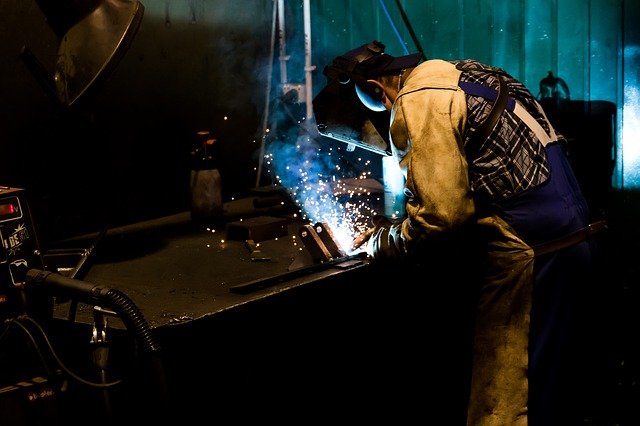What is Electrical Safety During Welding Activities? , And What are Main Safety Measures During this High Risk Task? This article, I will discuss the risks of electric welding, as well as the safety procedures that may be used to avoid these hazards.
Importance of Safety During Welding
When it comes to operations like welding, It requires a high level of electrical safety. Welding can be very dangerous for a welder if he or she is not wearing the proper safety equipment or following the proper safety standard procedures and protocols.
When welding, a variety of issues can go wrong, including the following common welding hazards:
- explosions
- gases, and fumes
- as well as electrical shocks
- burns, and other injuries.
To avoid these incidents, welders should take the essential precautions and wear PPE to ensure their safety during the welding process. Welding can result in electrical injuries, which are highly hazardous.
Because it will protect the welding process, electric safety during wiring will play a role in welding.
An electrical injury can be caused by touching live electrical parts, wearing moist clothes, and neglecting to get repairs performed by experienced professionals.
Electric shock hazard during welding
Live electrical circuits are utilized to produce a pool of molten metal during the arc welding process. As a result, while welding, you run the danger of receiving an electric shock.
You also run the danger of receiving a secondary electric shock if you contact a portion of the welding or electrode circuit while touching the metal you’re welding.
You are especially at risk if you operate in electrically dangerous environments. for example:
- In wet circumstances.
- While dressed in damp clothes.
- On metal buildings or floors.
- In confined quarters where you must lay, kneel, or crouch.
- Resting your torso, arms, or legs on the metal being welded is not a good idea, especially if your clothes is damp or your skin is exposed.
- Stand or lay on a plywood, rubber, or other dry insulating mat.
- Touching the electrode or metal components of the electrode holder with skin or damp clothes is not permitted.
How to Ensure Electrical Safety During Welding

Electrical safety during welding can be done by several guidelines or following the measures that are defined below.
- Ground the welder casing so that if a problem arises within it, a fuse will blow, cutting off the electricity.
- Protect your body from the metal you’re welding with.
- When welding, use clean, dry gloves that are in good condition.
- To avoid electrical shock, avoid welding in moist or damp locations.
- Avoid standing in water, on damp surfaces, using moist hands, or wearing sweaty clothing. Never immerse energized (hot) electrode holders in water.
- Avoid coming into close touch with the welding equipment’s and the work-piece live components.
- Connect the work or metal to a suitable electrical ground. Always shield oneself from the labor and the earth.
- If practicing arc welding in damp or high humidity circumstances, wear appropriate protection equipment such as rubber boots and rubber pads. Wear a pair of rubber gloves underneath your welding gloves.
- During a welding process, always keep your hands and body dry.
- Avoid standing in water, on damp surfaces, using moist hands, or wearing sweaty clothing.
- Never immerse energized (hot) electrode holders in water.
- Avoid coming into close touch with the welding equipment’s and the work-piece live components.
- If practicing arc welding in damp or high humidity circumstances, wear appropriate protection equipment such as rubber boots and rubber pads. Wear a pair of rubber gloves underneath your welding gloves.
- Use an insulating pad under the operator if the welding process must be performed on steel or another conductive material.
- Put the welding transformer in proximity. In the event of an emergency or an accident, the transformer may be rapidly turned off to cut off the power source.
- When not in use or on breaks, turn off the welding transformer. Before leaving the welding area, remove the remaining welding electrode from the electrode holder.
Electrical safety during welding will not only save the loss economically but also save the welder from may happening shocks.
If the power supply to the welding equipment has not been disconnected, do not hold or move the welding electrode holder and the welding return cable at the same time when changing from one working position to another.
Read Also my Articles:
- Personal Protective Equipment for Welding Activities
- 13 Tips How to Safely Electrical Equipment
- Electrical Safety Checklist for Construction Sites
What to do If Electric shock Happens:
The above-mentioned principles must be followed before or during the welding process, but if an electric shock affects the body of the welder, the steps that must be performed are as follows:
- Cut off the electricity at the fuse box or circuit breaker panel, or, if possible, turn off the appliance or electrical
- Call for medical treatment immediately. If an appliance or electrical equipment is the electrical source,equipment and disconnect it. Simply shutting off the device is insufficient.
- Wear dry gloves or cover your hands with fabric if you must transfer a victim away from a live contact, and stand on dry insulating material like as cardboard, wood, or clothing. When attempting to transfer the victim, ensure that you have solid footing and will not slip or fall.
- If the sufferer is not breathing, provide artificial respiration.
- If the victim’s heart has stopped, perform Cardiopulmonary resuscitation CPR (only if you are trained in CPR).
- Move the wire or power source away from the victim or push the victim off the live electrical source using a dry piece of wood, broom, or other dry, insulating object or substance.
- If there is a risk of neck or spinal injuries, for example, do not move the person unless absolutely essential.
Apply a sterile dressing on burns. Electrical burns may appear minor on the surface, but they can be severe deep within the tissue.
Maintain the victim’s comfort, warmth, and rest, and keep an eye on his or her respiration.

